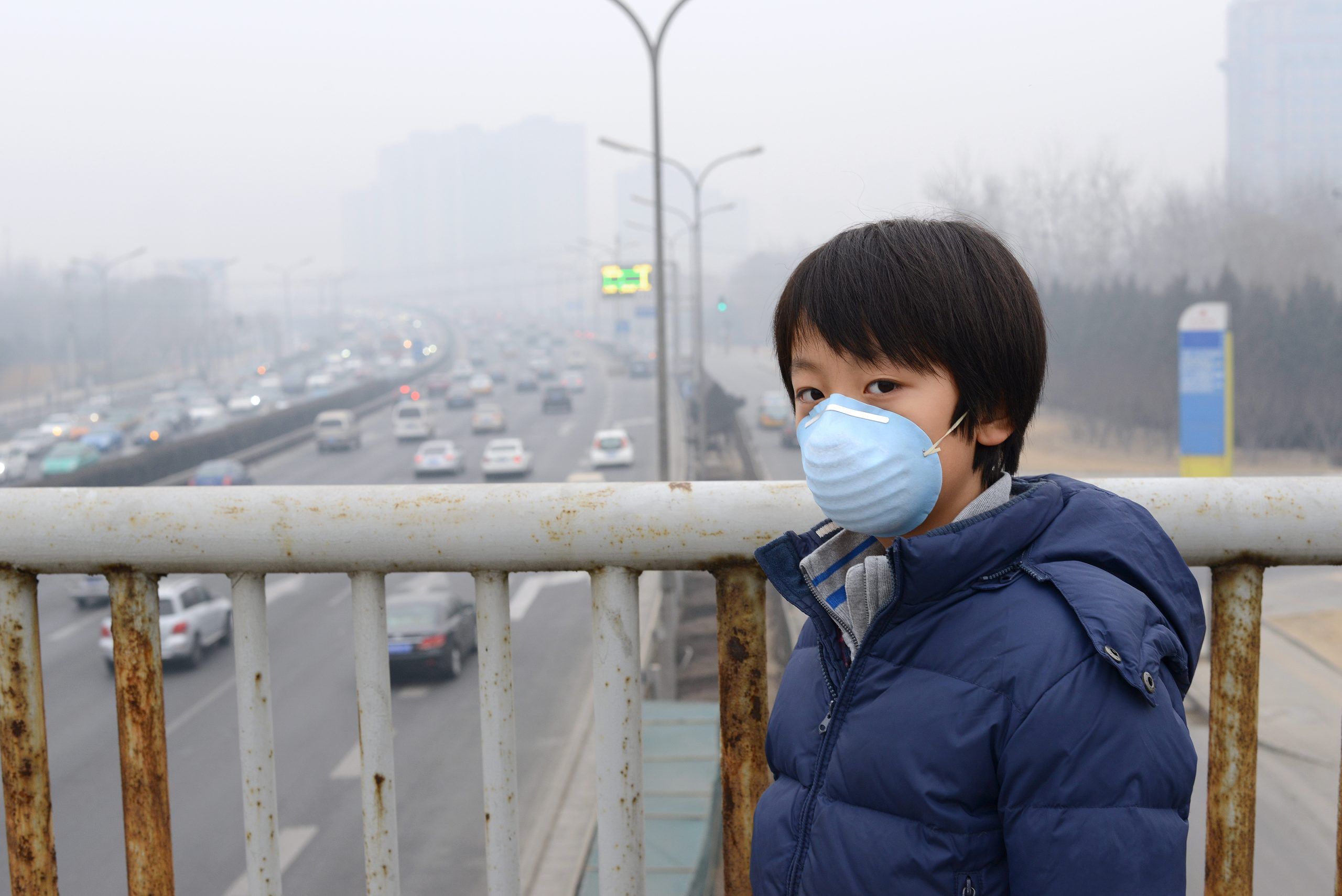Air pollution poses a serious hazard to our health. Most people are aware that air pollution – like all pollution – is a problem, but many have no idea how serious the potential threats really are. As time passes and we collect more and more data, it is becoming clear that air pollution is already wreaking havoc on our bodies and our environments.
Case Study: China, a place where the air pollution has become a tangible danger, instead of an abstract, faraway threat. We have all seen the photographs of residents walking to work in a cloud of thick gray while wearing surgical masks because the smog in Beijing is so severe. Earlier in 2014, the level of fine particles (PM 2.5) in the air was measured at 505 micrograms per cubic meter. The World Health Organization (WHO) says a safe level is around 25 micrograms per cubic meter. Short term exposure to PM 2.5 particles can cause irritation to the nose, throat, and lungs including sneezing/coughing and runny nose. It is also linked to shortness of breath. Long term exposure to PM 2.5 particles has been shown to reduce lung function and contribute to chronic bronchitis. It can even exacerbate lung cancer and heart disease.
In fact, the smog in Beijing can be so bad that they have been forced to close highways and airports due to reduced or non-existent visibility. This phenomenon negatively affects the economy as it deters international tourists from visiting. And, it’s not just foreigners that are concerned. During periods of particularly bad smog, locals are not traveling throughout the country either, thus compounding the toll on the economy.
Perhaps most alarming is the recent warning from some scientists that if the smog worsens it could begin to slow photosynthesis in plants. This would make the conditions more like a nuclear winter instead of simply a case of bad air pollution.
While most cities do not boast anything near the levels of air pollution in Beijing, we do have to be aware of the dangers that lurk in the air. Each breath we take of poisonous air is harmful to our health.
Even when we live in an area with minimal air pollution – or what we perceive to be minimal air pollution – we should take steps to make sure each breath we take is as clean as it can be. According to The American Lung Association, we breathe in roughly 35 gallons of air per day. That’s an average of over 20,000 breaths – so even small levels of air pollution can really add up!
While it can be a challenge to protect yourself from the air outside when going about your daily tasks, you can protect yourself by controlling the quality of the air in your home. Using an air purifier to produce clean, healthy air is an easy first step. High-quality HEPA air filters can take out over 99% of pollutants in the air. Make each breath you take clean and pure.
The common effects of air pollution range from hay fever to trouble breathing to death. In fact, the World Health Organization recently declared that air pollution is the single greatest environmental health risk, causing one in eight deaths per year. When we can breathe freely we have more energy, feel better and potentially add years on to our lives – it’s a simple way to improve overall quality of life.
